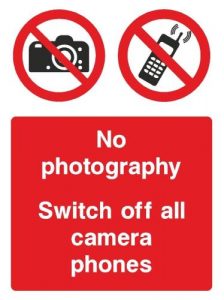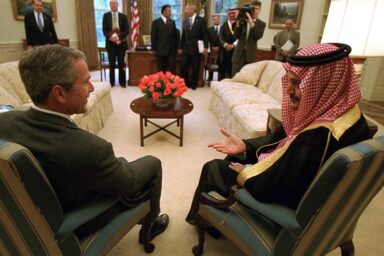In a case that fully demonstrates the pervasiveness of surveillance cameras in America, the absence of cameras at one of the biggest trials of the year is glaring. Andrew Quemere examines how the federal courts have managed to stay happily anachronistic.
 Boston Marathon bombing suspect Dzhokhar Tsarnaev’s trial is in its ninth day of testimony. It’s one of the most significant cases Boston and the nation have seen in years.
Boston Marathon bombing suspect Dzhokhar Tsarnaev’s trial is in its ninth day of testimony. It’s one of the most significant cases Boston and the nation have seen in years.
Except we haven’t seen it.
As fascinated as I am by the story behind the Boston Marathon bombing, I couldn’t make it to court to see the U.S. attorneys and Tsarnaev’s defense team make their cases. Even if I had, there’s no guarantee I’d have been allowed into the courtroom or the overflow room set up to meet the heightened demand; there’s only so much space.
So why is it, that in a day and age of ubiquitous video cameras—amply proven by testimony so far—that we haven’t been able to see the proceedings? Simple. The press isn’t allowed to bring cameras into the courtroom, so only those present got to see the proceedings at the public trial.
Ordinary people are left to read live tweets from those who did make it. We read articles on news sites. We watch TV reporters talk about what they saw. Good luck getting a transcript of the trial, unless you’ve got deep pockets. The estimated cost for a full transcript is more than $92,000, so it’s not an option for most people.
For those following the murder case and other legal tribulations of disgraced NFL star Aaron Hernandez, the idea that there‘s no camera in Tsarnaev’s courtroom may come as a surprise.
***
While Hernandez’s fall from grace is the sort of salacious crime drama that can capture the public’s imagination for years, the Boston Marathon bombing is the sort of story that will go down in the city’s history. The blasts killed three people, injured another 260 in often gruesome ways, and led to the unprecendented shutdown of a major American city. It’s the defining national security event since 9/11.
It would be impossible for the hundreds of surviving Marathon bombing victims and their countless family members and friends to fit inside the courtroom, or even make it every day. The trial, which is expected to last months, will therefore go unseen even by most of those who have personal connections to it.
The reason we can’t see Tsarnaev’s far more significant trial in action, while that of Hernandez plays in heavy rotation, is because federal courts have banned cameras since 1946. The state court where Hernandez is being tried doesn’t have such a ban.
The federal court has made several arguments in favor of the ban, such as that cameras could inhibit testimony, or interfere with the administration of justice. That’s a shame, because federal courthouses hear significant criminal cases, such as the worst case of corruption in the FBI’s history—James “Whitey“ Bulger, who avoided justice for years because of his connections to crooked FBI agents. And it didn’t happen in the public eye.
The documentary Whitey chronicled the case—but it has no footage of the trial itself.
Important Cues the Camera Picks Up that You Won’t See
What goes missing without the unblinking eye of the camera is a higher level of nuance and detail, Justin Silverman, the executive director of the New England First Amendment Coalition, said.“Cameras provide an objective account that drawings, which vary significantly depending on the artist, simply cannot,” he told WhoWhatWhy.
Retired federal judge Nancy Gertner, a Clinton appointee who has argued in favor of cameras in the courts for years, said state courts have disproven many of the arguments against their presence. “For the most part, the state courts all across the country have been dealing with cameras for almost 40 years and the republic still stands,” she said in a recent speech.
Congress has repeatedly failed to get the courts to change, despite concerted efforts. Senator Chuck Grassley (R-Iowa) recently said that “The founders intended for trials to be held in front of all people who wished to attend… court proceedings (should) be open to the public and, by extension, the news media and broadcast coverage, the same way CSPAN opened Congress to the public.”
The surrogate for public access is journalists, but it’s not a perfect system. Reporters summarize what happens and use short, sometimes incomplete, quotes. While we expect reporters to inform and educate us, it‘s always possible they will get their facts wrong or take a quote out of context.
Allowing cameras in the courtroom would be the best way to counteract this. Most people may not watch court cases in their entirety, but if cameras are banned, it’s not even an option.
***
There‘s a slim chance this situation will change. A number of federal courts are participating in a pilot program that allows cameras in civil cases. Unfortunately, recording is only allowed with the consent of the presiding judge and all parties involved. Furthermore, the press isn’t allowed to bring in any cameras; only court staff can.
There’s no indication this latest attempt will lead to change. After a three-year pilot that began in 1991, the Court Administration and Case Management Committee recommended allowing cameras into the courtroom. But the Judicial Conference of the United States declined to do so, saying that cameras might intimidate witnesses and jurors.
I hope that some day soon, either Congress or the federal judiciary does the right thing and allows cameras into important cases like the Tsarnaev trial. Until then, we’re stuck looking at sketches, and reading possible misquotes. And we will not hear the voices, or see the body language or facial expressions and other cues that may suggest whether a witness is telling the truth



